Choosing the right wood finish is key to making your woodworking projects shine. A good finish not only protects the wood but also highlights its natural beauty. It turns a simple piece into a work of art.
There are many wood finishing techniques out there. Finding the perfect one can seem hard. But knowing what each finish does can help you choose wisely. Whether you want a shiny look or a soft, matte finish, the right choice can make your project stand out.
Exploring wood finishes can help you bring out the best in your woodworking. You can create pieces that are not only useful but also beautiful to look at.
The Transformative Power of Wood Finishes
Wood finishes have the power to make wood look amazing. The right finish can turn a simple project into a stunning work of art.
Wood finishes can change how wood looks and lasts. Oil-based finishes highlight the wood’s natural beauty, while water-based ones protect it without changing its color. The finish you choose depends on the wood, the project’s use, and the look you want.
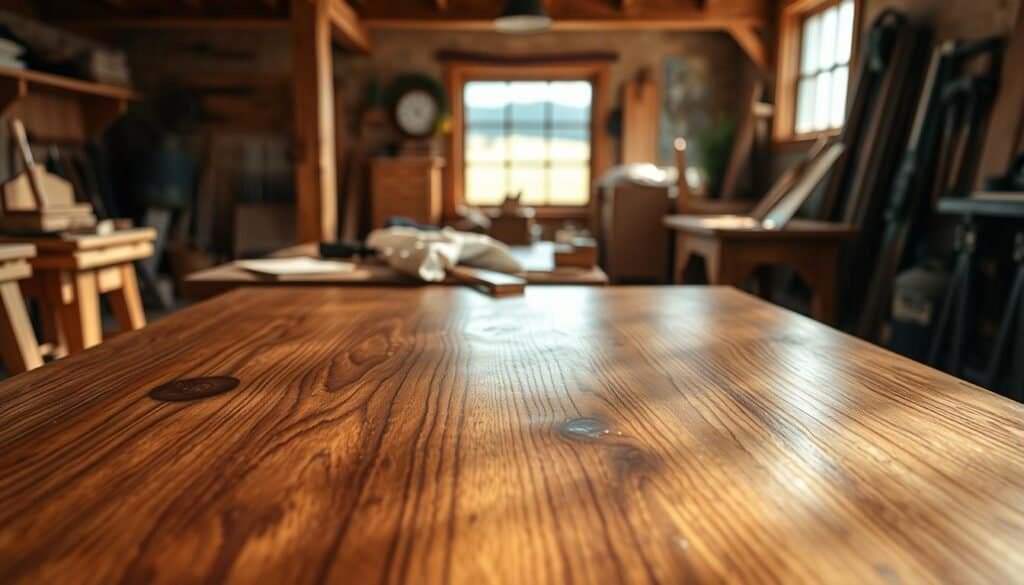
Knowing about different wood finishes is key to getting the look you want. Shellac adds a vintage touch, while varnishes and polyurethanes make projects last longer. The right finish brings out the wood’s character and makes it last.
Finishing tips stress the need for good prep and application. The best methods include sanding, staining, and sealing well. Whether you’re experienced or new, understanding wood finishes can help you make beautiful, lasting projects.
Understanding Wood Types and Their Finishing Needs
Different wood types need different finishes. Knowing these needs is key for a great project. The wood type affects your project’s look and how long it lasts.
Wood falls into two main groups: hardwoods and softwoods. Hardwoods, like oak and maple, are denser. They need more prep before finishing.
Enhancing Natural Wood Texture
Improving wood texture adds depth and character. Sanding and using a wood conditioner can highlight the wood’s beauty.
For woods with strong grain, the right finish can make it stand out. For example, a penetrating oil finish can show off the grain.
Working with Different Wood Tones
Wood tones vary a lot. From pine’s light tones to walnut’s dark richness, each has its own look. Knowing how to work with these tones is important.
Staining is a way to change or enhance wood tone. The right stain can make your project look uniform or create contrast.
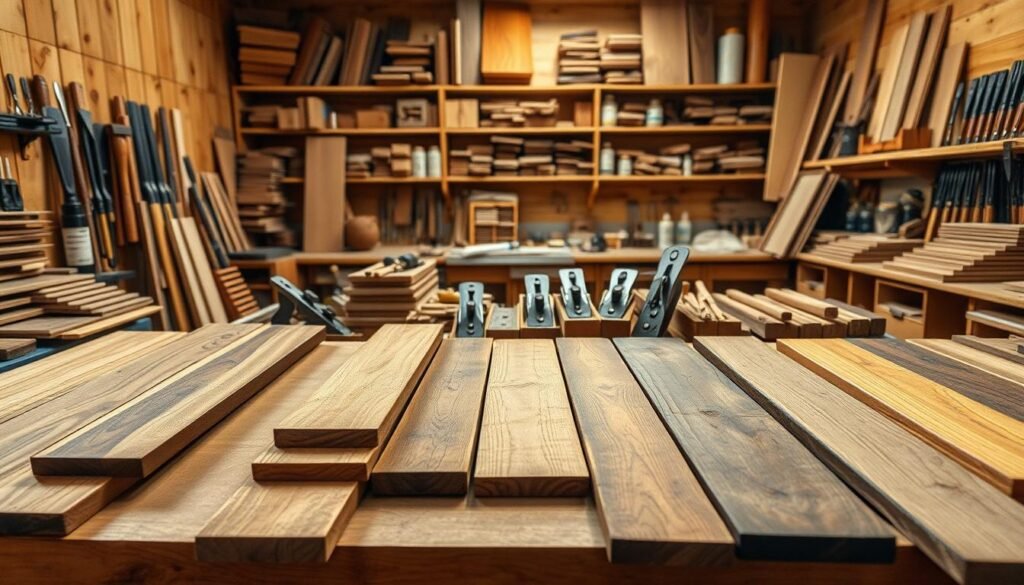
By knowing your wood type’s needs and using the right finishing techniques, you can make your project beautiful and durable.
Oil-Based Finishes: Bringing Out Natural Warmth
Oil-based finishes give wood a warm glow that’s hard to beat. They soak deep into the wood, making the natural color and warmth pop. This makes them perfect for projects where the wood’s beauty is key.
Oil-based finishes are great at showing off the wood’s natural warmth. They don’t leave a surface film like some other finishes do. Instead, they blend into the wood, creating a rich, inviting look. This is really true for woods like oak and walnut, where the finish highlights the grain and color.
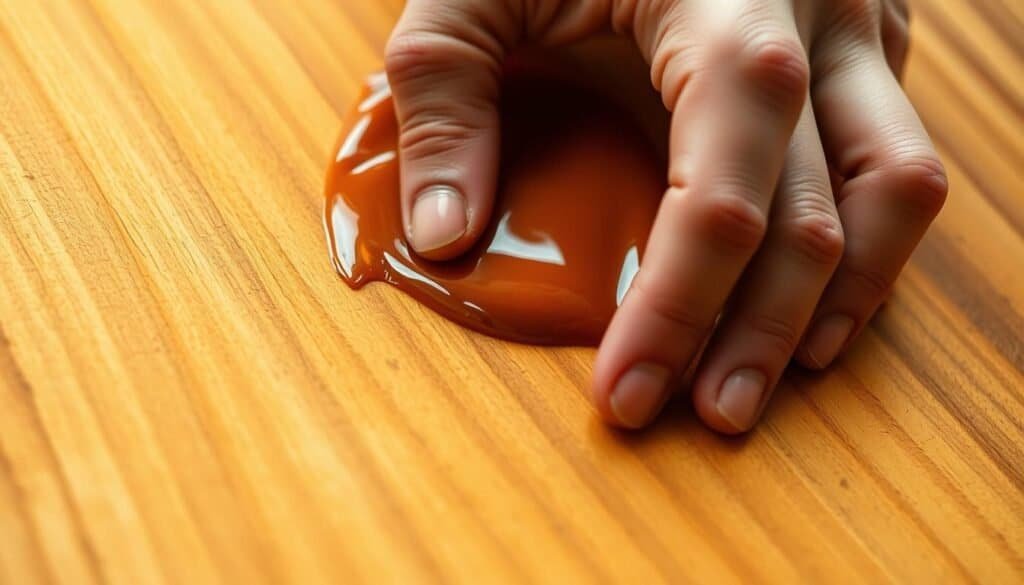
Oil-based finishes differ from water-based ones in a few ways. They take longer to dry and have stronger fumes, so you need good ventilation. But they offer a durability and warmth that’s unmatched. Water-based finishes dry faster and smell less, but they can’t match the depth and richness of oil-based ones.
Oil-based finishes can be used in many creative ways to enhance projects. Applying thin coats can deepen the color and finish. You can also mix them with stains to boost the wood’s natural color and character.
In summary, oil-based finishes are a great choice for bringing out wood’s natural warmth. Knowing their benefits helps craftsmen choose the right finish for their projects. Whether it’s furniture or decor, oil-based finishes add a timeless beauty to wood.
Water-Based Finishes: Clear Protection with Minimal Color Change
Water-based finishes protect wood without changing its color. They are great for projects where the wood’s natural color is key.
These finishes offer clear protection. They don’t change the wood’s look like oil-based finishes do. This makes them perfect for showing off the wood’s natural beauty.
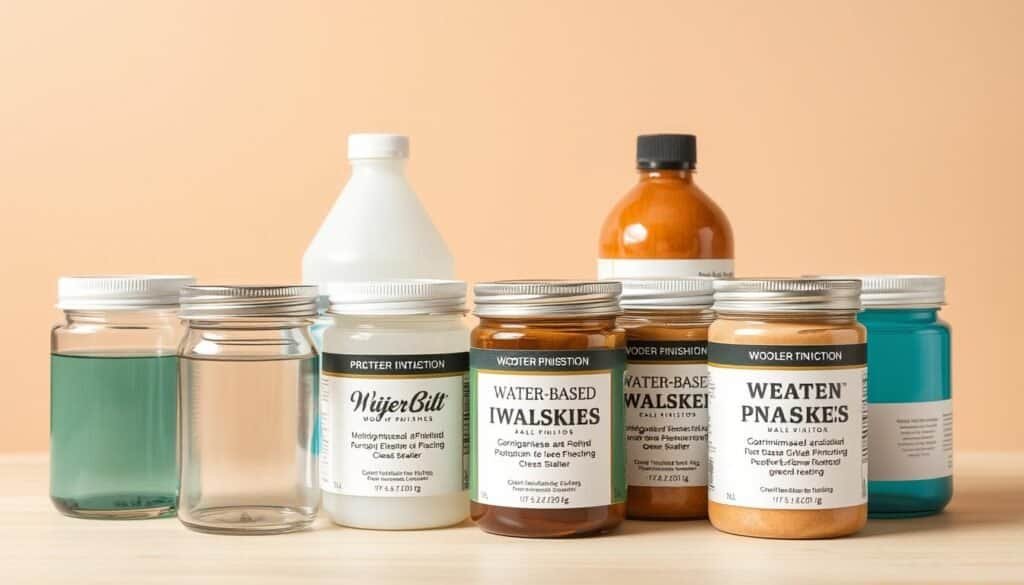
Water-based finishes come in many sheens. You can choose from matte to glossy. This lets you change the look of your project. They also come in different colors, giving you design flexibility.
Applying water-based finishes is easy and quick. They dry fast, so you can apply multiple coats in one day. This is a big plus for those finishing projects.
These finishes are great for projects that highlight the wood grain. They protect your work while keeping its original look. Whether it’s furniture, flooring, or other wood items, water-based finishes are a reliable choice.
Shellac: The Vintage Finish with Timeless Appeal
Shellac is a finish with a rich history, adding a vintage charm to wood projects. It’s perfect for craftsmen wanting to add elegance to their work.
Shellac enhances wood’s natural beauty. It highlights the grain and texture, giving a warm, inviting look. This makes it great for rustic wood projects, where the wood’s natural charm is key.
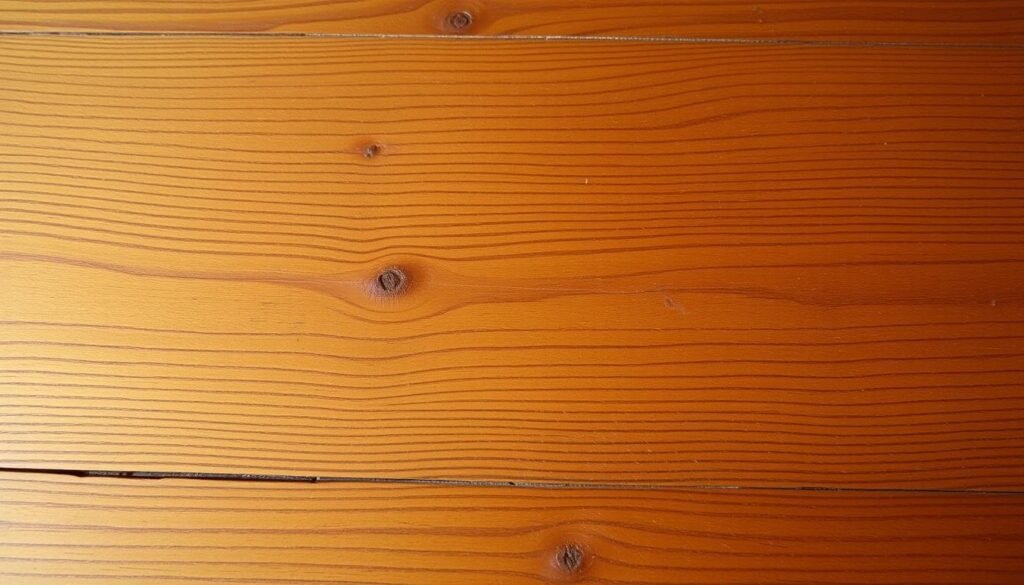
Shellac is also versatile, fitting various uses like furniture making and interior design. Its timeless appeal comes from blending well with different styles, from traditional to modern.
Shellac is also durable and easy to repair. It can be touched up or reapplied as needed. This makes it practical for projects that face wear and tear.
Overall, shellac is a favorite among woodworkers for its beauty, durability, and ease of use. It’s ideal for rustic wood projects or adding vintage touches to furniture. Shellac is definitely worth considering.
Varnishes and Polyurethanes: Durable Beauty for High-Use Projects
Varnishes and polyurethanes are great for wood projects that get a lot of use. They make wood look good and last long. This is perfect for things like furniture, floors, and tables.
Varnishes give a hard, protective layer. They come in oil-based and water-based types. Polyurethanes are flexible and resist scratches well. Together, they make wood look great and stay safe.
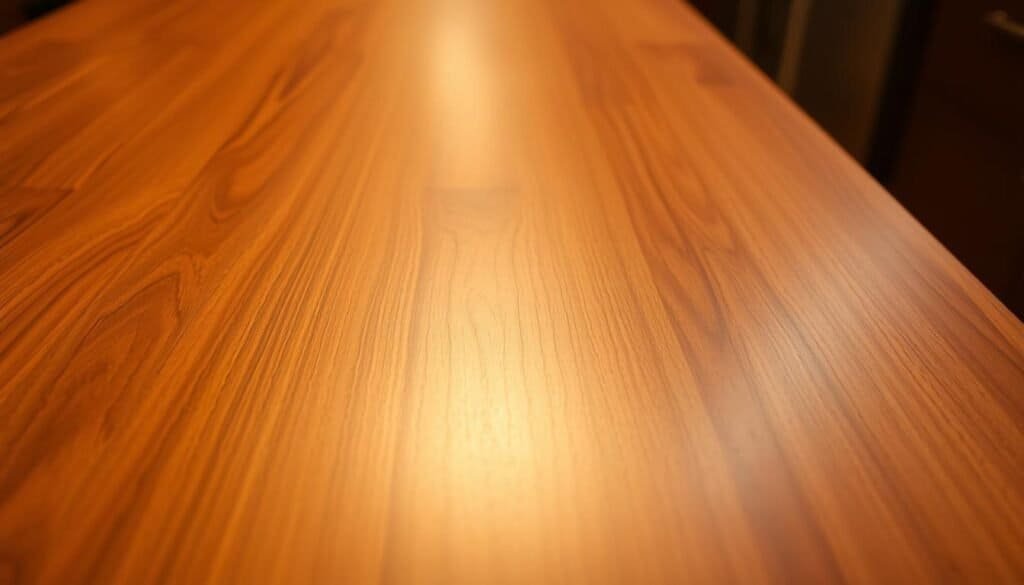
The finish’s sheen can change how a wood project looks. Varnishes and polyurethanes come in matte, satin, and gloss. Matte is subtle, satin is soft, and gloss is shiny.
Matching Sheen to Project Purpose
Choosing the right sheen depends on the project’s use and look. For example, matte or satin is good for often-used furniture. Gloss is better for decorative items.
In short, varnishes and polyurethanes are perfect for wood projects that need to last. By picking the right sheen, you make your project look great and last longer. They work well for furniture, floors, and more.
Which Wood Finish Brings Out the True Beauty of Your Project?
The true beauty of your woodworking project shines through the right wood finish. A wood finish does more than protect the wood. It also brings out its natural beauty, making it a key part of the woodworking process.
The finish is as important as the wood itself in woodworking. Different finishes can change how your project looks, from showing off the grain to adding a rich color. The perfect finish can make your project truly stand out.
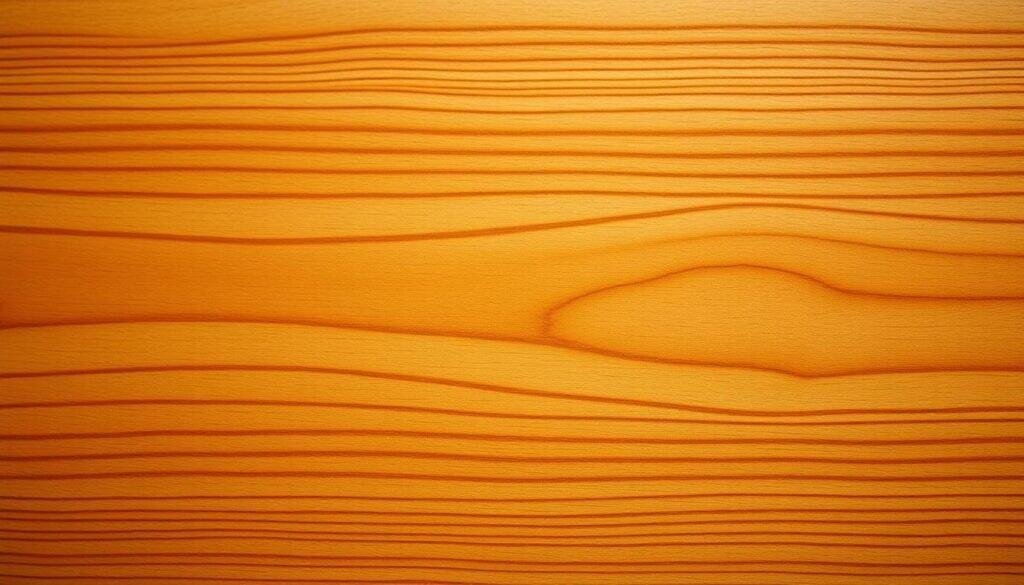
Furniture finishing needs careful thought, balancing looks and durability. For furniture, a finish that looks good and lasts is key. Oil-based finishes, for example, are loved for furniture because they warm up the wood and last long.
Flooring and High-Traffic Surfaces
For flooring and high-traffic areas, the finish must be very durable. Water-based finishes and polyurethanes are great here because they protect well without changing the wood’s color too much. They also dry fast, saving time.
Wood veneer projects need a finish that shows off the veneer’s layers without hiding them. A water-based or low-VOC finish is perfect for these, as it gives a clear coat that won’t yellow over time. This keeps the veneer’s delicate look.
In conclusion, picking the right wood finish depends on your project’s needs. Whether it’s for furniture, flooring, or wood veneer, the right finish ensures your project looks great and lasts long.
Staining Techniques to Enhance Wood Character
Staining techniques offer many ways to make wood look better. The right stain can highlight the wood’s grain, add depth, and give a unique finish. This finish can match your project perfectly.
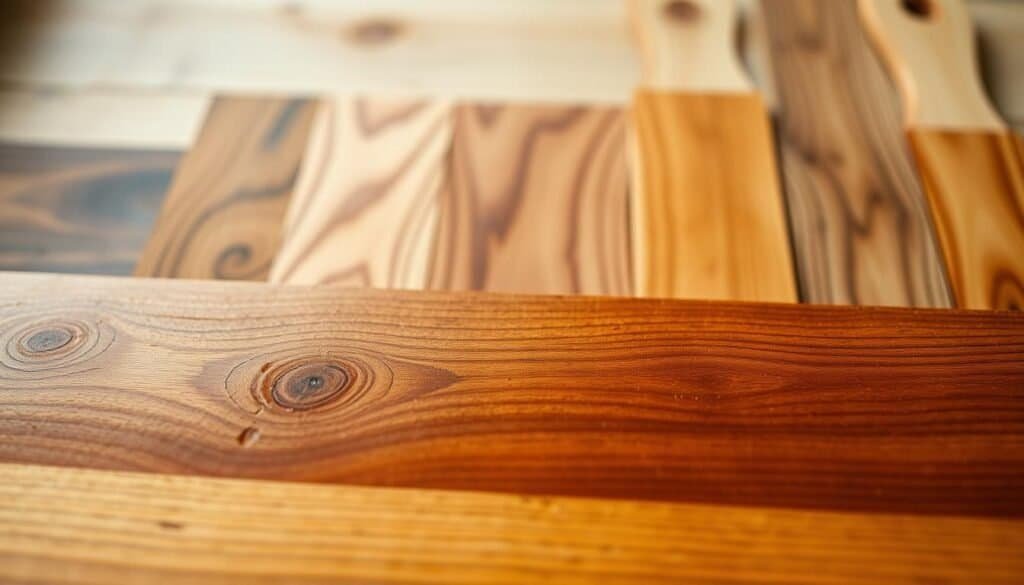
Understanding how to use multiple wood finish colors is key. This means layering different stains to get a rich, complex color. This adds depth and beauty to your project.
Creating Depth with Multiple Wood Finish Colors
To add depth, start with a light stain and then go darker. This layering creates a nuanced, multi-tonal look. It’s important to let each layer dry before adding the next to avoid a dark or muddy look.
Blending Techniques for Seamless Transitions
Blending techniques are vital for smooth transitions between wood tones or when fixing finishes. Using a blending stain or mixing stains can create a uniform color. This is great for a color washed wood look, where a soft, washed effect is wanted.
In summary, learning different staining techniques can really improve your woodworking. By mastering depth with multiple colors and blending stains, you can get professional results. These results will highlight the wood’s beauty.
Shou Sugi Ban: The Art of Charred Wood Finishing
The art of charring wood, known as Shou Sugi Ban, is a mix of old skills and new designs. This Japanese method is famous for its look and lasting quality.
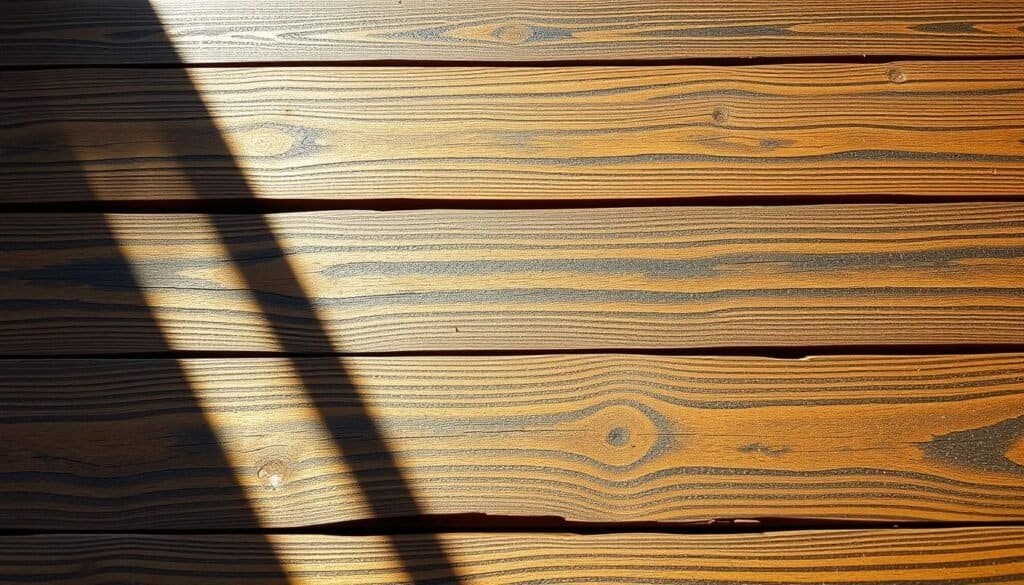
Shou Sugi Ban, or ‘burnt cedar board,’ started in 18th-century Japan. It was used to keep cedar wood safe. The wood’s surface is charred, making it stronger and more beautiful.
Tools and Safety for Charring Wood
To get the Shou Sugi Ban look, you’ll need a torch and safety gear. Gloves and goggles are a must. Also, make sure you have good air flow while working with charred wood.
Burned Wood Finish DIY Projects
Shou Sugi Ban works well for many DIY projects. It’s great for making furniture and exterior walls. It’s also used for outdoor furniture that looks amazing.
Sealing and Protecting Charred Surfaces
After charring, you must seal the wood. This keeps it safe from water and sunlight. You can use natural oils or clear waxes to seal it.
Learning about Shou Sugi Ban lets you add a special touch to your projects. It makes them look better and last longer.
Specialty Finishes for Unique Effects
Woodworkers can add a special touch to their projects with unique finishes. These finishes can turn simple wood into stunning pieces. They make wood stand out with their special textures and looks.
Mixed wood and burled wood are fascinating to work with. Mixed wood has different grain patterns that look amazing with the right finish. This brings out the wood’s natural beauty.
Burled wood has unique, swirling patterns. A special finish can highlight these patterns. It makes the wood a key feature in any project.
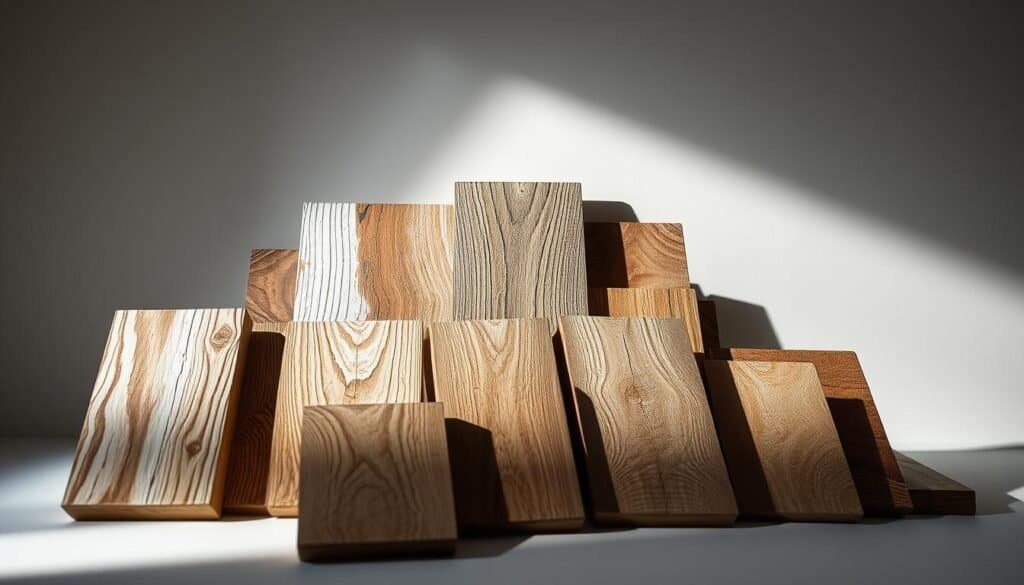
Specialty finishes do more than just highlight wood’s beauty. They can also give wood a specific look. For example, some finishes can make wood look distressed or vintage.
Some finishes even add texture to wood. This makes woodworks more interesting to touch. It’s great for items like wooden handles or decorative boxes.
Woodworkers can try many finishes to get the look they want. They can go for something bold or something more classic. This lets them explore different styles.
In short, specialty finishes open up a world of possibilities for woodworkers. They can make unique and eye-catching pieces. By using these finishes, woodworkers can take their craft to new heights.
Application Methods for Professional Results
The secret to a perfect wood finish is knowing how to apply it right. You need the right materials and the skills to use them. Learning different application methods can greatly improve your woodworking.
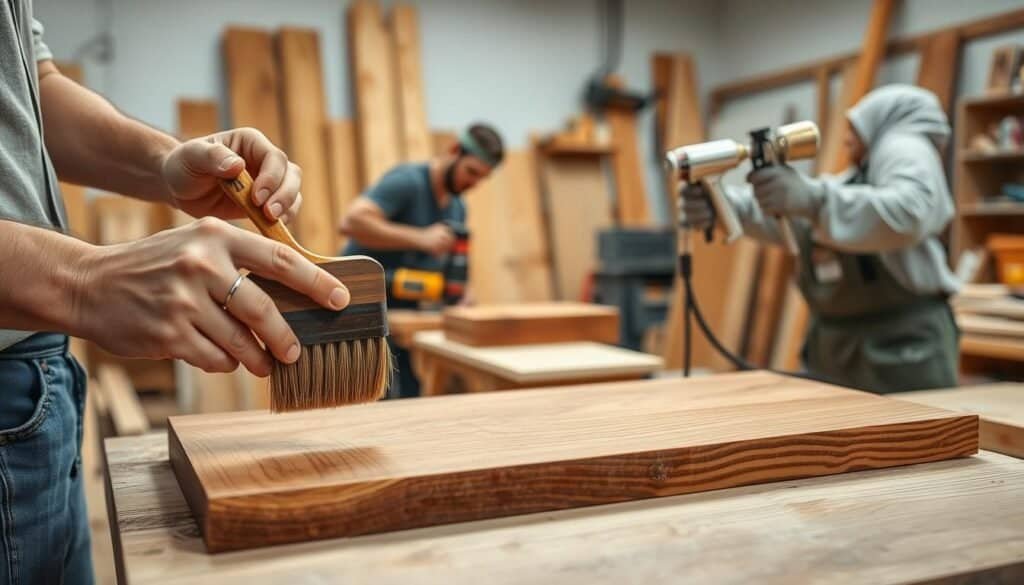
Sanding Between Coats: Tips and Tricks
Sanding between coats is vital for a smooth finish. Use fine-grit sandpaper to remove dust and small flaws. This ensures a strong bond and a flawless finish.
Achieving a Glass-Like Polished Wood Surface
To get a glass-like finish, apply thin coats of finish and let them dry. After the last coat, buff the surface with a polishing compound. This boosts the look and durability of the finish.
By using the right application methods and tips, like sanding and polishing, you can make your woodworking look professional. Whether it’s a small item or a big piece of furniture, the right techniques matter a lot.
Troubleshooting Common Wood Finishing Problems
Wood finishing can face several common issues. Knowing how to fix these problems can save a lot of time and effort. It’s important to be aware of these issues to get a professional finish.
Uneven finish application is a common problem. To solve this, make sure your wood is well-prepared and sanded before finishing. If you see unevenness, lightly sand the area and apply the finish again.
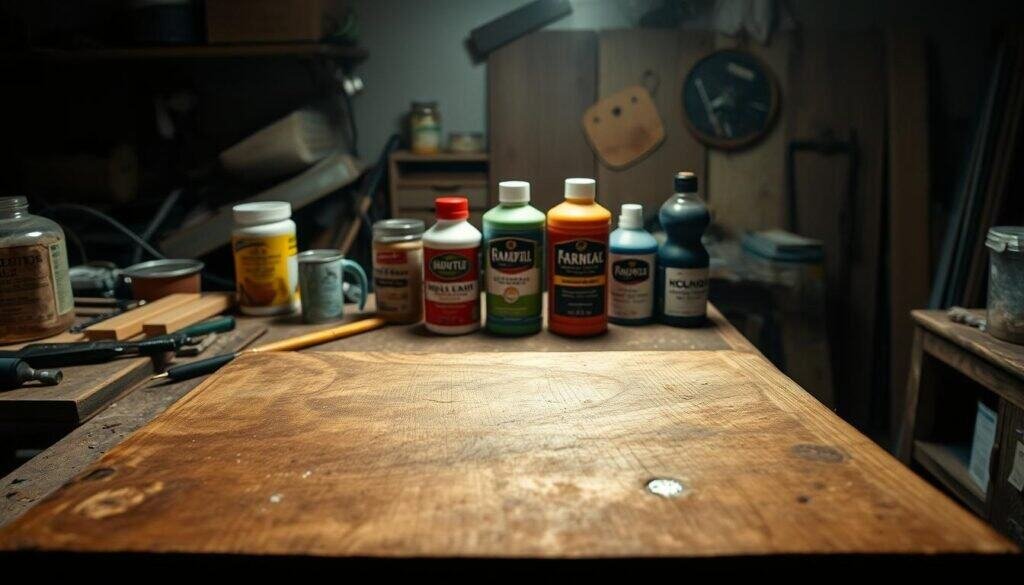
Another issue is if the finish dries too slowly or too quickly. The drying time can be affected by temperature, humidity, and the type of finish. If it’s drying too slowly, try increasing the temperature or improving ventilation. If it’s drying too fast, reduce the temperature or apply thinner coats.
Comparing different wood finishes can help solve problems. Oil-based finishes highlight the wood’s natural warmth but dry slower than water-based ones. Knowing the characteristics of each finish helps you pick the right one for your project.
To get a professional finish, follow some key tips. Apply thin coats, let each coat dry fully before adding more, and use the right tools. By understanding common problems and how to fix them, you can ensure your woodworking project turns out great.
Conclusion: Selecting the Perfect Finish for Your Woodworking Vision
Choosing the right finish is key to making your woodworking dreams come true. You need to know about oil-based, water-based, shellac, varnishes, and polyurethanes. These finishes can make your wood projects shine.
The perfect finish does more than just protect the wood. It also brings out its natural beauty. You might want a vintage look with shellac or something durable with varnishes and polyurethanes. The goal is to find a finish that matches your project’s style.
With the tips from this article, you can pick the perfect finish for your projects. Using the best wood finishing methods, you can make your woodworking dreams a reality. Your creations will be both beautiful and useful.
